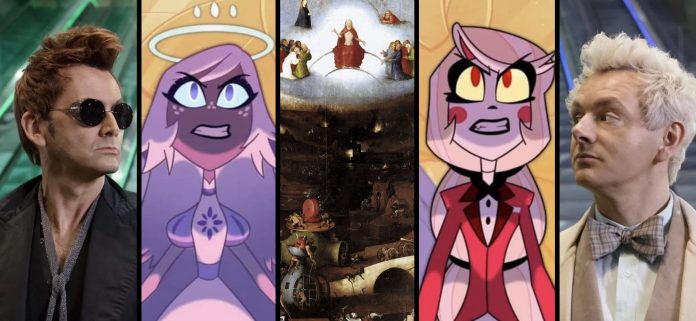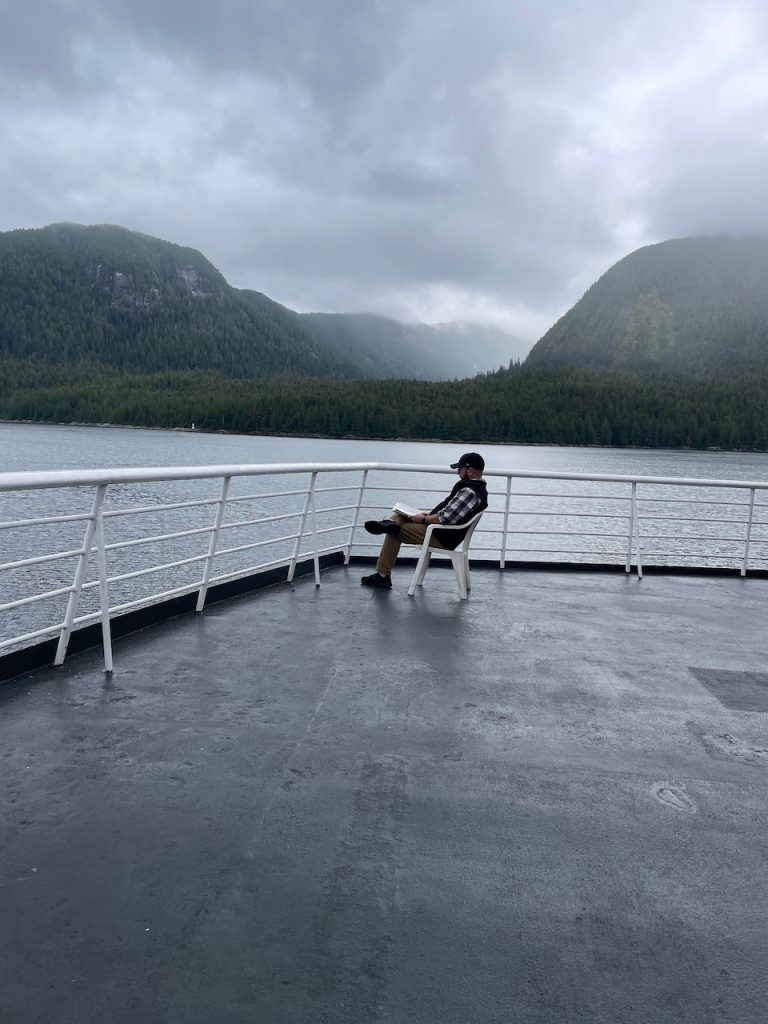
When future historians look back at early 21st century culture, the smart ones will see an interesting thread of media that decided it was time to take on Heaven itself.
It started with The Good Place where the most questionable souls found out that Heaven wasn’t quite right and tried to correct it. Miracle Workers’ first season had angelic Daniel Radcliffe trying to keep God (Steve Buscemi) from destroying creation out of boredom. And a worthy screen adaptation of Philip Pullman’s His Dark Materials novels (not the 2007 movie dreck) came to HBO starting in 2015. That series starts with a child’s decision to fight one authority and work her way to the very top.
Good Omens’ second season sharpened its critique of Heaven’s competence after the lighter first season and original book by Neil Gaiman and Terry Pratchett. Fallen angel and fashion hellion Crowley (David Tennant) has been questioning from the beginning, begging why he created such beauty as the Horsehead Nebula just to have it run 6,000 years as window dressing for humans. Such questioning led to the whole falling thing. His long time friend and earth-bound angel Aziraphale (Michael Sheen) is more trusting of the Ineffable Plan. The passable book report of a first season ended with the two averting Armageddon on a technicality. The touching and funny second season ends with Crowley and Aziraphale finding a deep institutional problem with the whole system, and painfully diverging on how to deal with it.
This week, the final episodes of Hazbin Hotel’s first season arrive on Amazon Prime. An animated void-black comedy from the YouTube creator Vivienne Medrano, Hazbin Hotel follows a rowdy group of demons as they set up a diversion program for damned souls. Leading the group is Charlie Morningstar (voiced by Erika Henningsen), daughter of Lucifer and starry-eyed idealist bent on singing souls out of Hell. Her partners include villains, porn stars, drunkards, and a radio demon named Alistor.
To say the show is crass is like saying Seattle is occasionally moist. Hazbin is a double scoop of blasphemy in a giant, blood drenched profanity cone. Murder abounds. There’s a section of town for cannibals. Most objectionably for some, cis-het relationships are the exception. All of it is hilarious.
There’s visual and pacing learning curves for folks who are new to the rabid VivziePop fandom, but worth it. The episodes get tighter as they progress, and the musical numbers smarter. The animation style is rambunctious, viscera red, and crackingly paced, requiring anyone used to Pixar-smooth crayon box to find the twitchy and kinetic Looney Tunes goggles of their childhood. Acme brand, naturally.
Dumb analysis will look at these stories as queer endorsing, sacrilegious, affronts to God. But the shows are not making Heaven an enemy by grandstanding for sinners, or pushing the sacrilegious and occult, or even something as pedestrian as the predetermined war between good and evil. All portray Hell as terrible.
The enemy is Heaven because Heaven is terrible and sanctimonious. Angels don’t know why they got wings, or what separates them from those that didn’t. The shows emphasize that keeping the methods to get into Heaven unknowable makes the Pearly Gates a rigged craps table. If the house always wins, everyone else – righteous and damned alike – lose. Crowley puts it well, “When Heaven ends life here on Earth, it’ll be just as dead as if Hell ended it.”
There’s a couple roots for these ideas. Noting both an alt-spelled Aleister and a Crowley in the mix, we can start with an updated rehash of early 20th century mysticism, magick, and Do What Thou Wilt. Add in an evolution of the end-of-the-century fatalism. Simple “everyone’s doomed, let’s party” has turned to “everyone’s doomed, let’s party on the corpses of the bastards that put us here.” Those burning the whole planet down will be the featured guests at the last, greatest barbecue.
There’s something deeper. It’s not just the church, government, and corporations that’s the establishment here, but Heaven. The characters are not fighting some minor skirmish about suing to clean the river or stopping Old Man Potter from looting the town. They’re fighting the the fabric of reality and the nature of existence. Fighting authority and going all the way to the top.
The shows reflect of our times where the biggest problems are so integral to the function of our planetary, economic, and social systems that they feel divinely ordained. God is always just slightly larger than the most advanced technology of our day. Invent the watch, get a watchmaker Creator. See aliens, get extraterrestrial life engineers. Computers got fast enough to put us through The Matrix phase. Now, the most advanced technology is the systems grinding our lives to pieces, so God has become an arbitrary and violent bureaucracy. Culture puts up the first line of resistance by identifying the real problem.
Admittedly, I’m a bit sensitive to authority. Perhaps it’s a last rejection of Catholic upbringing. Perhaps it’s falling in the crater between Gen X and Millennials, seeing Boomers salt the earth behind them. I loathe the fact that arbitrary rules were made up by people who were only allowed to create them by luck of wealth, color, or the era they were born. These shows hint how many people agree.

Some of the best writing here at The Urbanist calls your attention to the invisible machinations shaping our lives. I’ve been doing it for five years now. There are long outdated plans that still underpin neighborhood zoning and industrial strategy. There are quasi-governments where electeds punt responsibility to appointed boards to control over housing, stadiums, and parks. There are indelible divisions of land that were set down before anyone alive, but are the basis for everything from the bias of the local newspaper to the shape of your house. There are a century of boundaries that randomly dissect the city, making a patchwork of governance and a mess of municipalities.
The one connection through these problems is that their creators were enthralled with perpetual control. They could never let go, never let something evolve, never give away the final say. Too many people still think their singular vision of the neighborhood or the country should maintain forever. They are finding ways to force their dead-hand control on the next generations through everything from historic districts or voting for a toxic orange insurrectionist. Divinely bestowed and sanctimonious.
I do not share their opinion. Change is vital. That’s part of the reason that this will be my last column for The Urbanist. After five years and some 250 articles, it’s time for this Friday spot to become something else. Who knows if it will be better, but it will be different. A few less food and sports columns to make way for the train content you all crave.
Before I go, remember this: Inertia is not creative and the status quo is not indefinitely sustainable. Both are arbitrary: trends and limits made up by another human being who happened to get here first. Forcing others to comply with either is more toxic and radical than letting change occur. If being open to change is all it takes to get into Hell, then Heaven was never an option for us anyway.
Ray Dubicki is a stay-at-home dad and parent-on-call for taking care of general school and neighborhood tasks around Ballard. This lets him see how urbanism works (or doesn’t) during the hours most people are locked in their office. He is an attorney and urbanist by training, with soup-to-nuts planning experience from code enforcement to university development to writing zoning ordinances. He enjoys using PowerPoint, but only because it’s no longer a weekly obligation.




